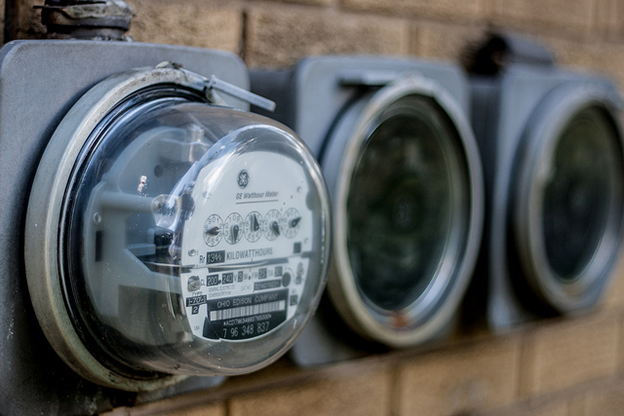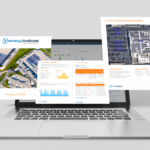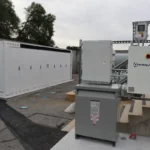There are a lot of factors that come into play when it comes to the economics of a solar plus storage project. From incentives to equipment to your location, all of these things play a role in estimating the cost and viability of a project. But one thing that might be at the top of that list is utility rate schedules. They are time-consuming to comprehend and always changing. Installers/developers probably know pretty well that you won’t be going through them with a fine-tooth comb. Accurate and transparent rates play a big part in estimating the avoided cost of a project.
That’s why we do it for you. Our utility rates team does a lot of heavy lifting for our customers when it comes to keeping track of rates. But how exactly is this done, what is the process of doing it and how is it possible that our team of 6 keeps up with that many rates?
Standard Process for Updating Rates
Our database is extensive. There are more than 850 utilities and a combined number of more than 36 thousand global and custom rates in our database and growing by the day. And these numbers are not only in the U.S. but currently in several other countries including Saudi Arabia, Australia, Brazil, and Italy just to name a few. Our internal database plays a big part in tracking all of these. Within it, we track the frequency in which a utility updates (monthly, quarterly, semi-annually or annually), the last effective date and the date the tariff should be reviewed next. It sort of goes in a monthly cycle. With every new month, our analysts will move down that internal database list to see which utilities have been updated. To determine this, our team reviews each tariff in detail. If any changes have been made, and the updated rate will be created, reviewed and activated. Rate accuracy isn’t something to be taken lightly, so at least 2 sets of eyes see these rates before they’re activated.
Custom and Global Rates
There’s a lot of rates in our database. But there’s a chance that the rate you’re needed for a particular project isn’t there. Energy Toolbase is a user-driven platform, meaning that it relies on users’ requests to get rates added to the database. For a rate that you’re not seeing, it could be because its simply never been requested in the past. Another reason why you don’t see it is that our utility rates team has previously determined that the rate would be a custom rate in our database. Custom rates can only be seen by the account that requested the rate. For both circumstances, you’ll simply need to request the rate.
Requesting Rates in ETB
Requesting a rate in Energy Toolbase is a straightforward process. Once you reach out to your account manager or to a senior analyst, we will begin to determine if that rate can be created. There’s a couple of details that are needed to create a rate, like 12 months’ worth of itemized utility bills. While it might be a pain to gather this info, it’s crucial to our team that we have them to determine if that customer is on a special program and to make certain we are accounting for all charges within a rate structure. Of course, we need that information to test the rate against the bills and make sure it is as accurate as possible.
Many users get custom and global rates confused within the Energy Toolbase platform. Global rates are rates that are accessible to any customer using our platform. Each of these rates contains charges that are applicable to all customers taking service on that schedule. As for a custom rate, those are only accessible to the customer who requested that rate. There are several reasons why someone would request a custom rate as if a customer has opted in to a special program that they receive an additional charge or credit for. Other reasons would be if a charge within that rate relies on usage specific to that customer or if the customer takes service through a third-party supplier or is located in a deregulated market.
Rates Involving a Third-Party Supplier
There are several deregulated markets across the country including Texas, New York, Illinois, and Ohio. A customer in a deregulated market ultimately gets to decide which entity supplies their electricity. It gets a bit tricky when you’re dealing with a third-party supplier because electric bills typically consist of two categories or charges; delivery charges and supply charges (commonly known as distribution and generation charges). When you have a customer that chooses a different supplier than the utility that delivers their electricity then you generally will have two separate bills. Unlike global rates, charges associated with third-party suppliers cannot be found on its website and that’s why the rate will need to be created as custom. You will never see a third-party supplier listed as a utility in Energy Toolbase with the exception of California CCA suppliers.
While gathering 12-months of bills can be daunting, it’s so important when requesting a rate, especially one dealing with a third-party supplier. Our team will do the best we can with what you give us, but in order for us to account for any seasonality or special programs and determine the accuracy, these are strongly encouraged.
Proposed/Final Decision Rates
When it comes to proposed rates, Energy Toolbase also considers those as custom. So you won’t find proposed rates readily available in our database without requesting them. These rates are obviously not effective yet, but we choose to consider them as custom because the rates are subject to change and the documentation that we’re provided is limited.
We’re aware that these rate schedules are confusing and to better educate you, we have launched a new ‘Utility Rates Series’ where we will be educating you on different topics related to various territories and states. Our first goal was to introduce you to our process of updating and maintaining rates within the Energy Toolbase database. Check out the recording of our ‘State of the Union’ webinar:



